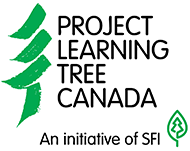
 When you ask a child what they think about forest fires, they tend to answer in one of two ways. Eyes wide and a slight look of fear – falling into the “afraid of fire” category. The other is eyes wide and piqued interest – falling into the “fascinated by fire” category. These are the two sides of fire – the good and bad aspects of a natural, if sometimes dangerous, phenomenon.
When you ask a child what they think about forest fires, they tend to answer in one of two ways. Eyes wide and a slight look of fear – falling into the “afraid of fire” category. The other is eyes wide and piqued interest – falling into the “fascinated by fire” category. These are the two sides of fire – the good and bad aspects of a natural, if sometimes dangerous, phenomenon.
That’s why it’s so important to teach children about both the good and bad of wildland fire, and the differences between “pure” wildfire and managed or “prescriptive” fire. Because while there are definite dangers related to the extreme wildfire events we’re seeing more frequently (human-caused or climate-change driven), there are also notable benefits of fire as a landscape management tool.
Fire is a natural event in many forest ecosystems. Not only does it help recycle nutrients back into the soil and help some plants regenerate, but it also is crucial to the survival of certain tree species. For example, Jack Pine and Lodgepole Pine both need the heat of fire to open and release their seeds for germination.
Managed fires, also known as prescribed burns, can:
- prepare an area for reforestation
- enhance wildlife habitat and berry production
- protect native species
- manage invasive species
- reduce future fire hazard by reducing burnable fuels.
 Prescribed fire can also help prevent the spread of wildfires, protecting nearby communities.
Prescribed fire can also help prevent the spread of wildfires, protecting nearby communities.
Through Project Learning Tree Canada’s (PLT Canada) suite of curated resources, educators can explore these topics with students of all ages. In the Nature of Fire activity collection featuring three hands-on activities (Nothing Succeeds Like Succession, Living with Fire, and Burning Issues) students in grades 6-8 investigate wildland fire and ecosystem change. Additional activities found in the Explore Your Environment: K-8 Activity Guide including “Have Seeds, Will Travel” and “Every Tree for Itself” investigate fire’s impacts on trees and forests.
One of the keys to wildfire resilience is having a sustainable forest management plan in place. In the “If You Were the Boss” activity from Explore Your Environment and Green Jobs: Exploring Forest Careers guides, students learn about the benefits of a sustainable forest management plan and even generate their own plan for managing a forested area. Not only does it help improve the health and productivity of forest lands, but it helps increase wildfire resilience.
For a gamified learning experience, teens and young adults can check out PLT Canada’s Forest Quest. Students explore different areas of the forest, including Lightening Peak where they come upon a recent wildland fire. The module highlights the impacts fires have on forests, how climate change impacts fire risk, the benefits of fire, tree species selection for reforestation efforts post-fire, and even green career opportunities like forest firefighter.
In one interactive element, students try their hand at developing a sustainable forest management plan to help reduce the spread of wildfire and identify where to replant trees in burned areas. Upon completion of Forest Quest, students will earn a digital badge showing they’ve learned about forest fundamentals.
 PLT Canada also developed a Forest Literacy Framework that helps educators teach students in Grades K-12 about 100 forest concepts, breaking them down into easy-to-understand themes, including wildfire. Specific activities can help answer key questions such as:
PLT Canada also developed a Forest Literacy Framework that helps educators teach students in Grades K-12 about 100 forest concepts, breaking them down into easy-to-understand themes, including wildfire. Specific activities can help answer key questions such as:
- What role does wildfire play in forest ecosystems?
- In what ways does climate change affect the frequency and intensity of wildfire?
- How can we manage forests to maximize the benefits and minimize the negative effects of wildfire?
When you introduce children to nature through PLT Canada activities, they’ll learn how to think, not what to think, about the environment. Collaborative, inquiry-based learning uses nature to teach students about math, science, language arts, social studies, economics, art, and even giving back to the community.
Learn more about PLT Canada’s lifetime of learning resources at pltcanada.org.